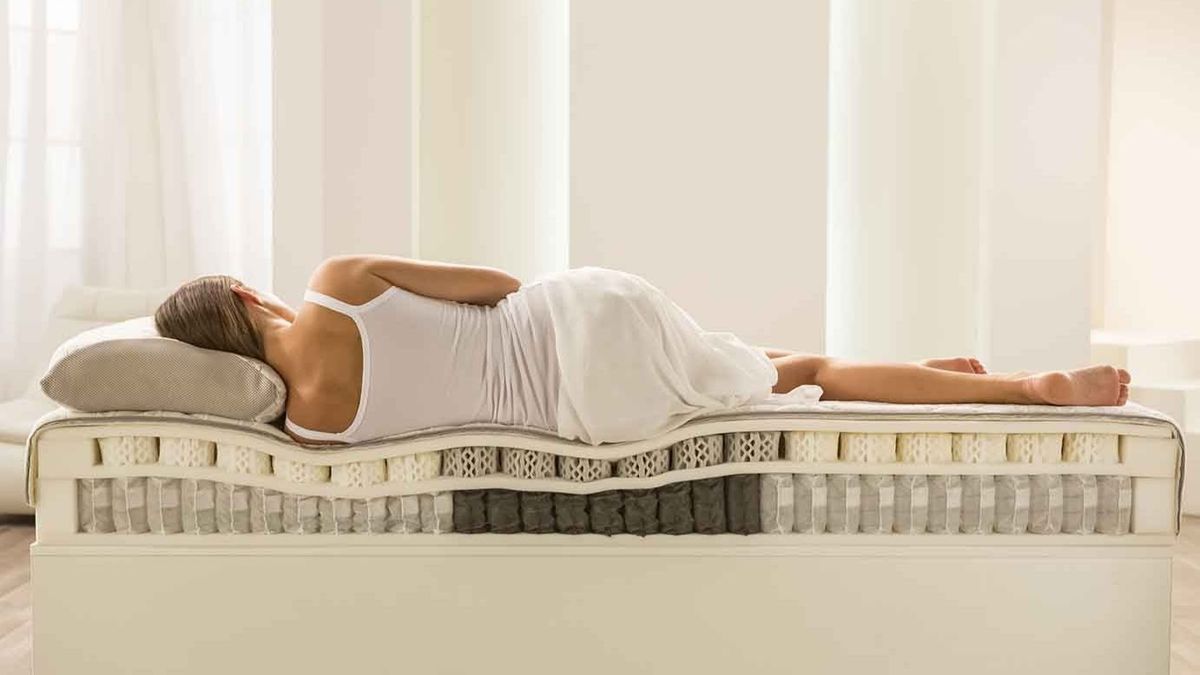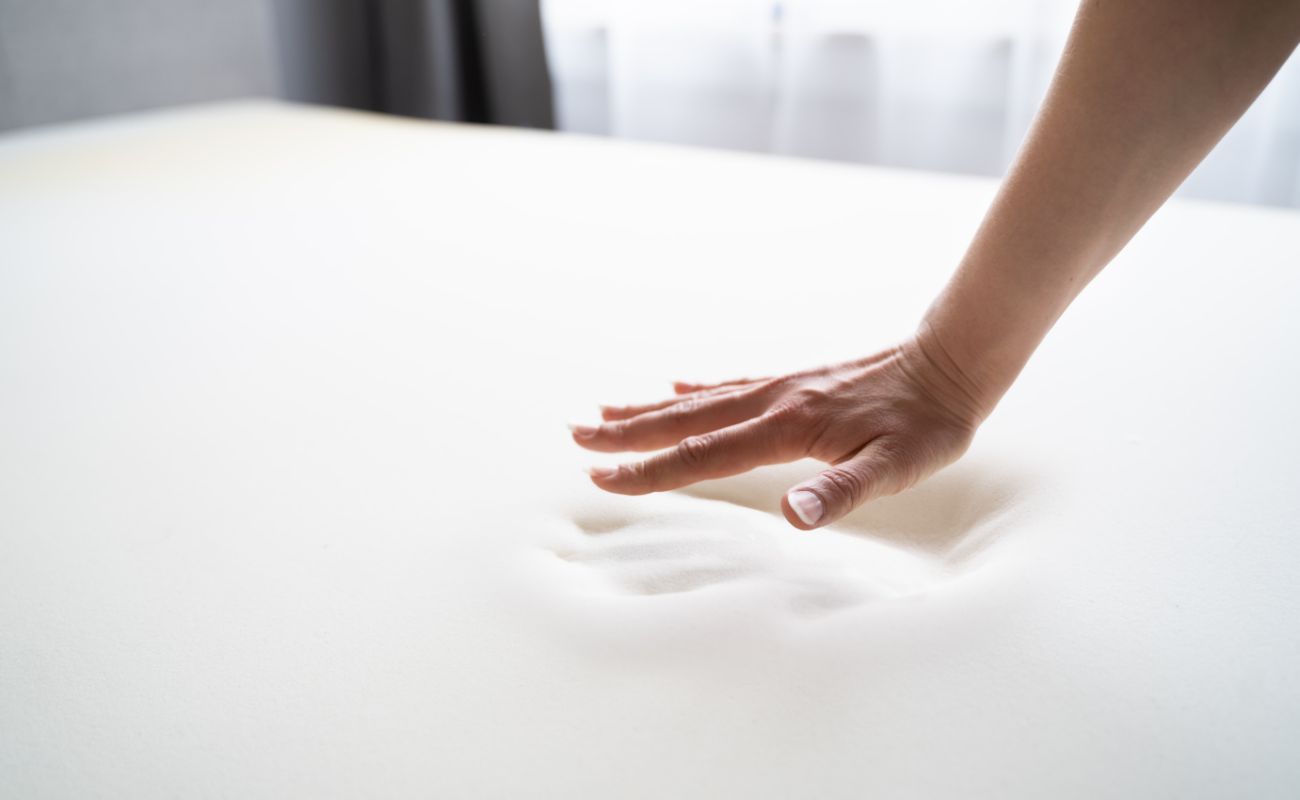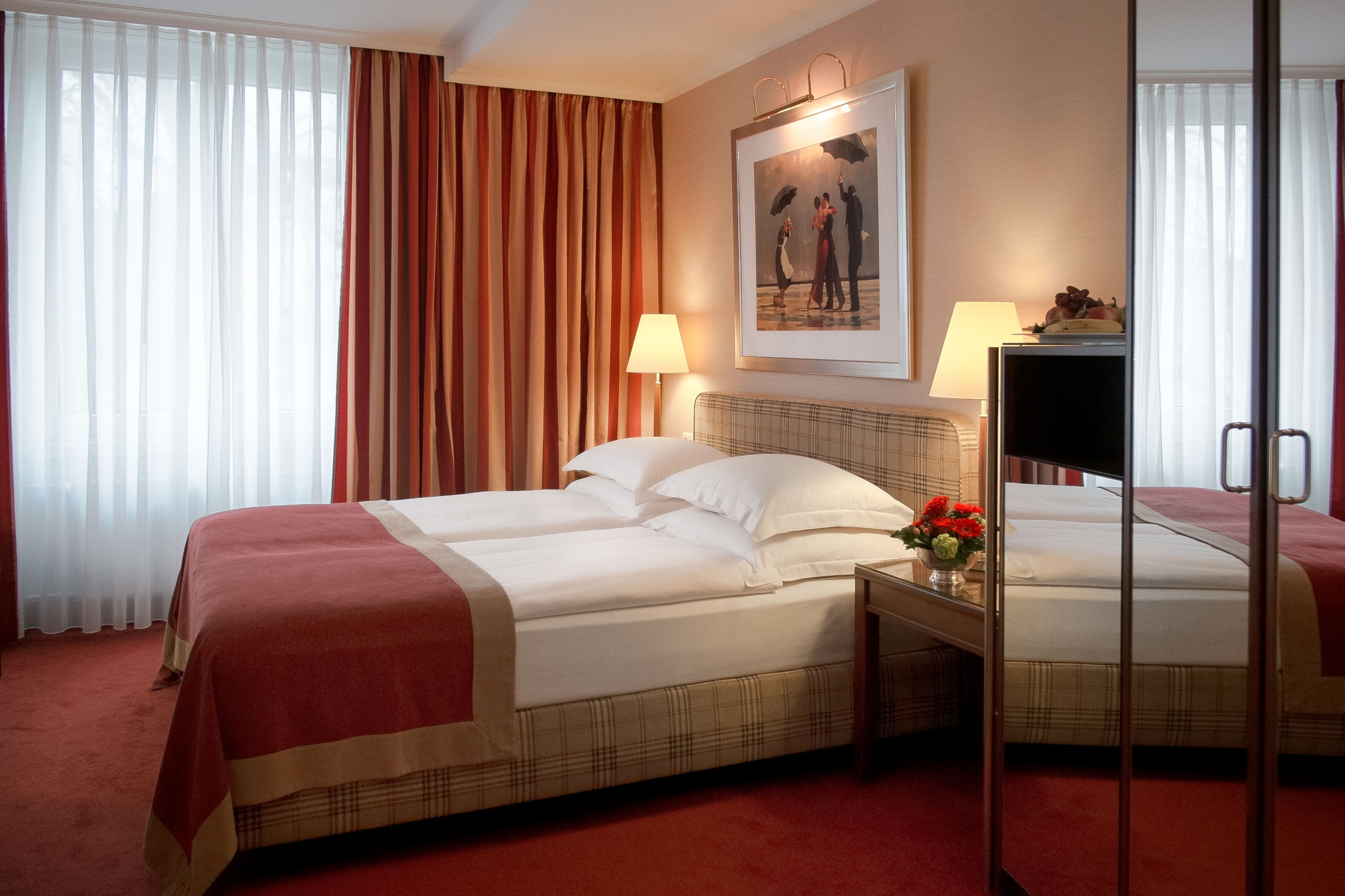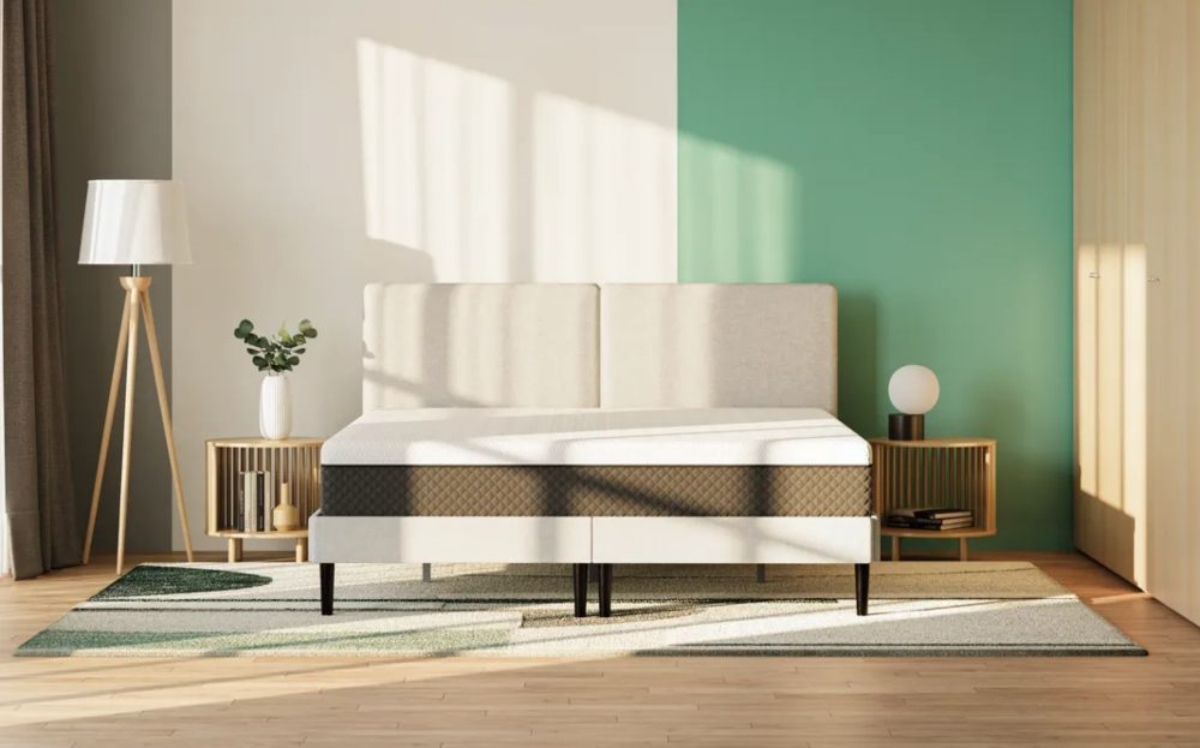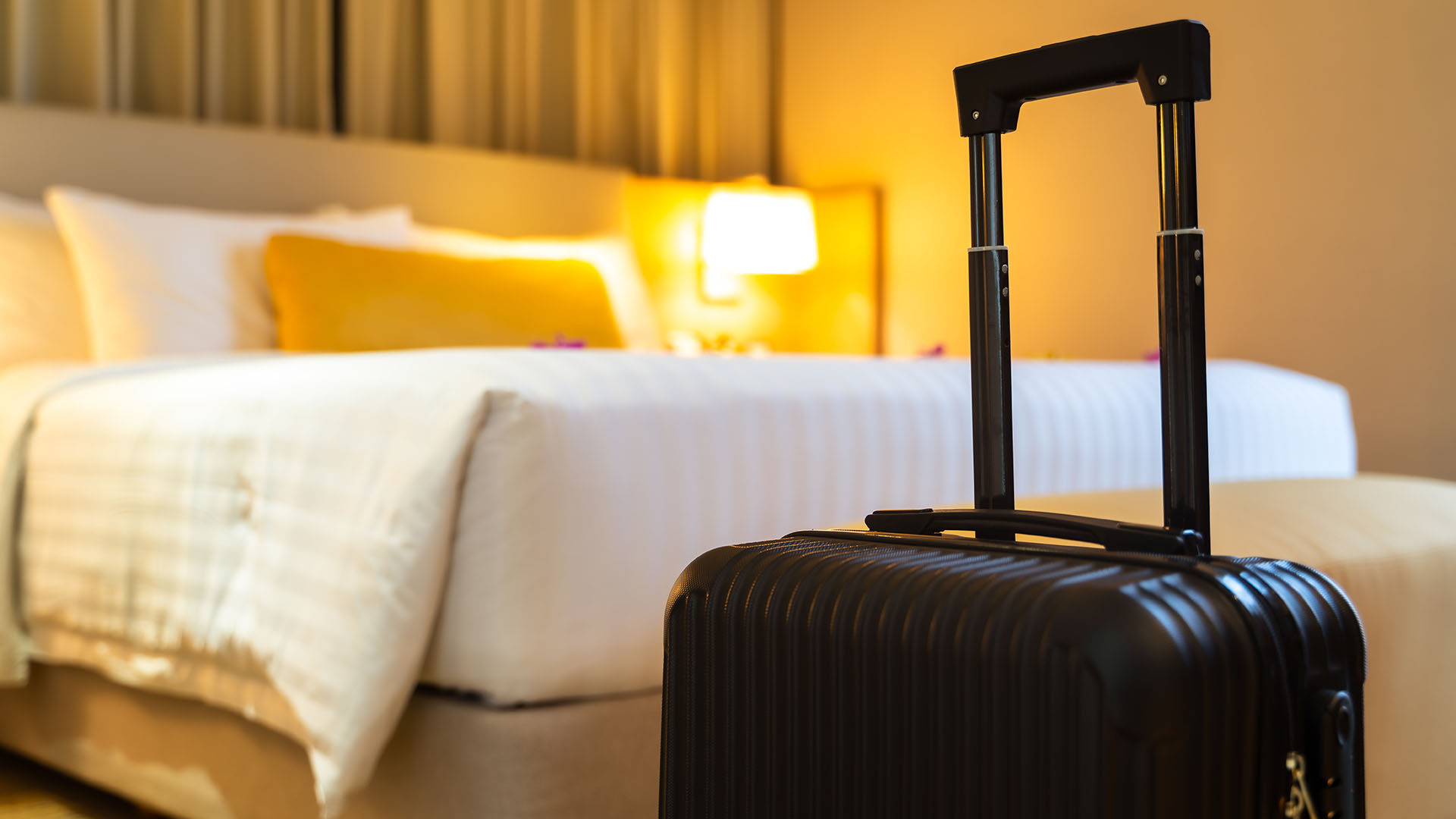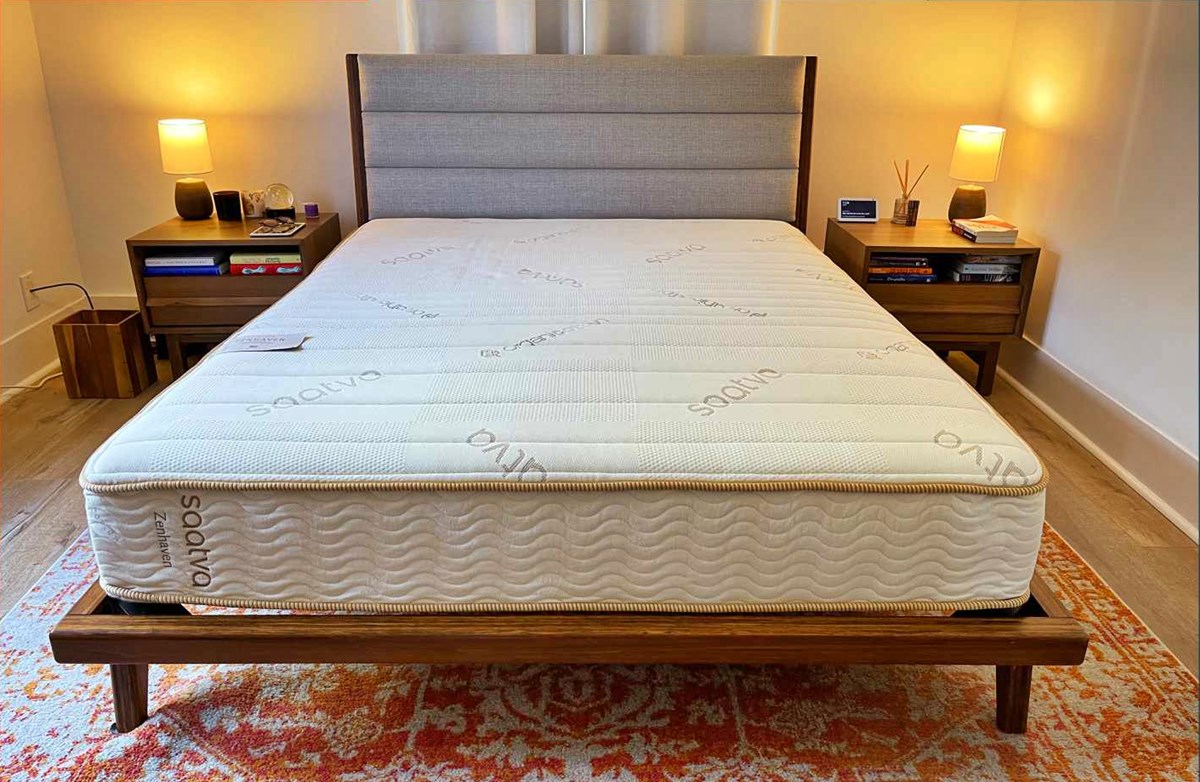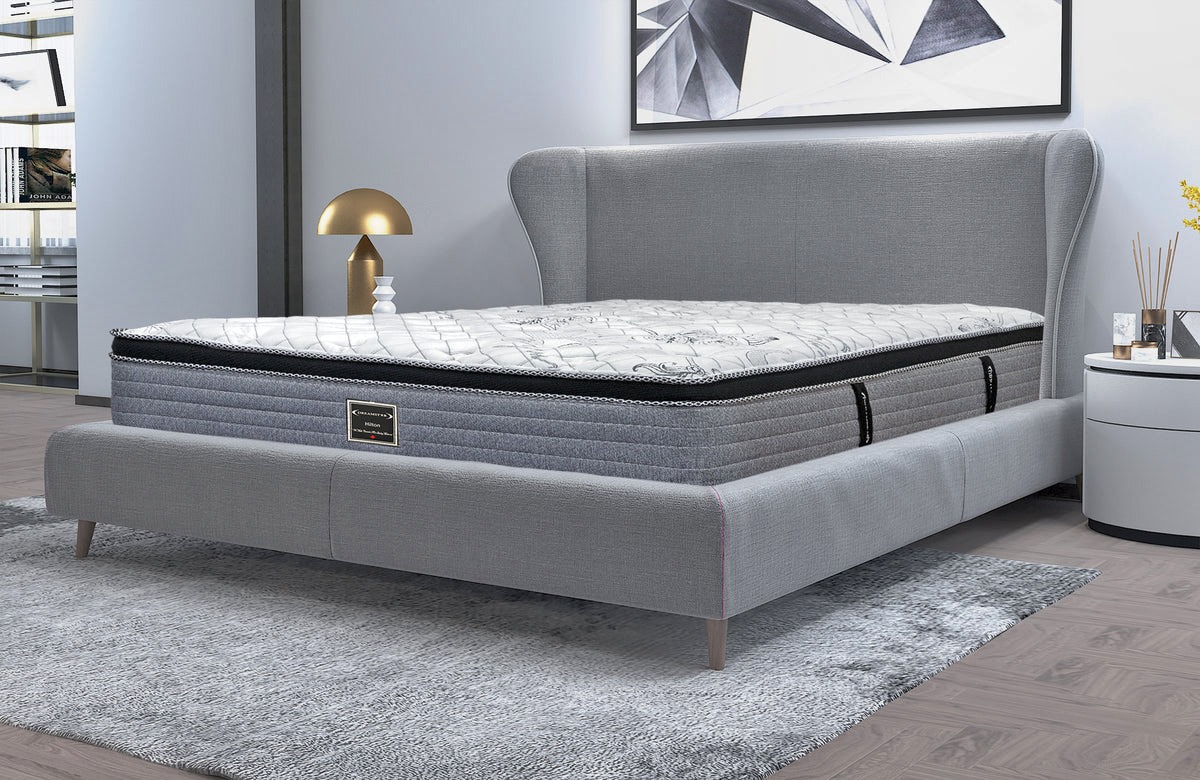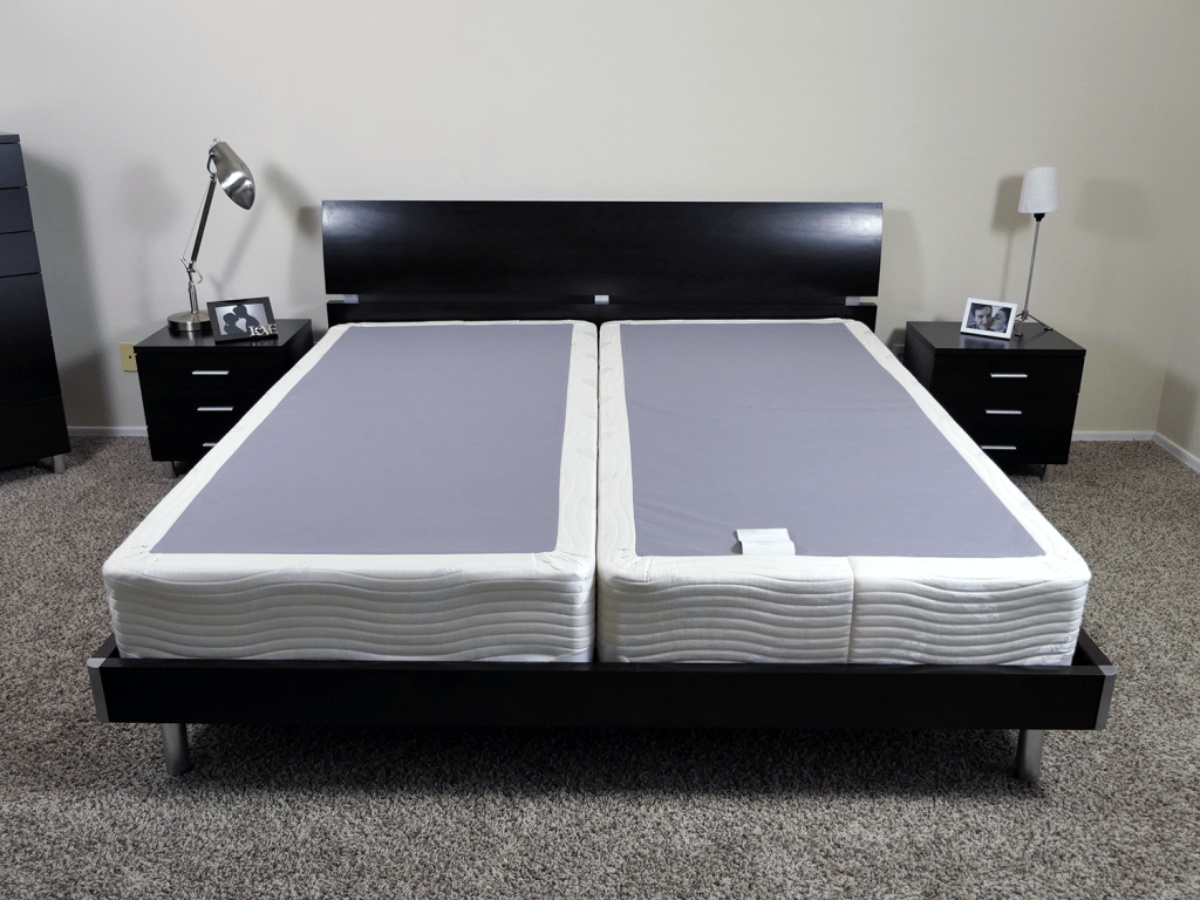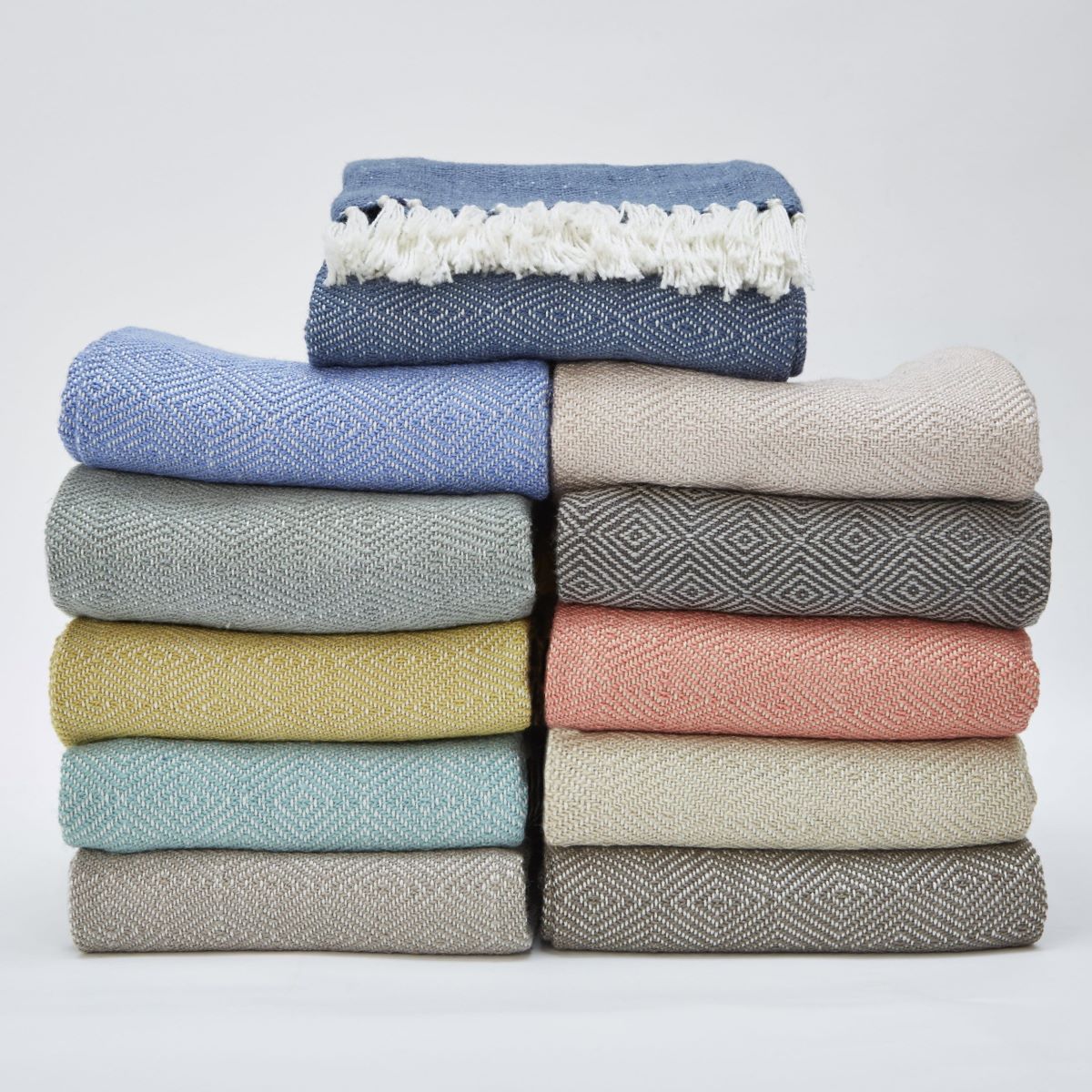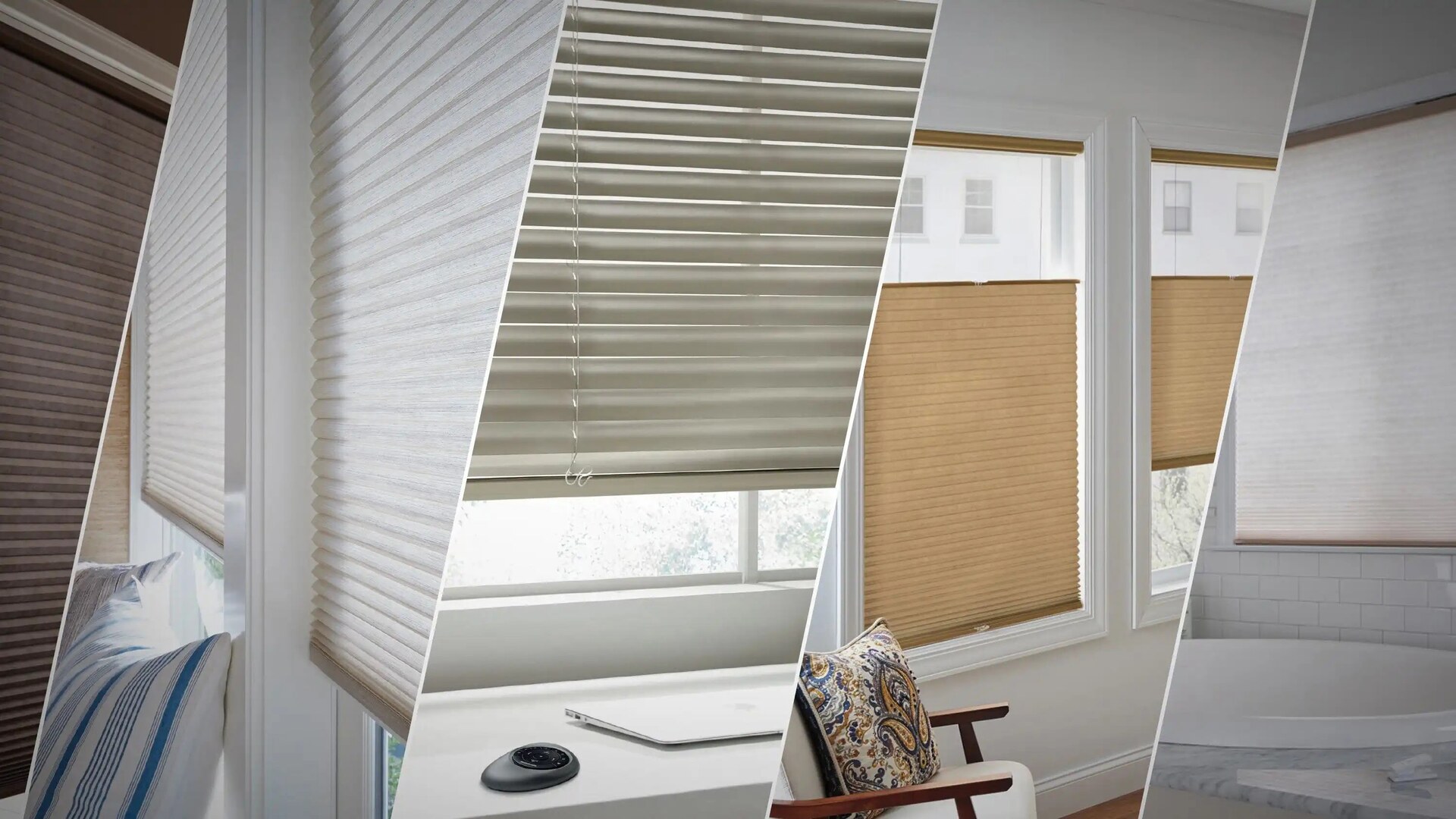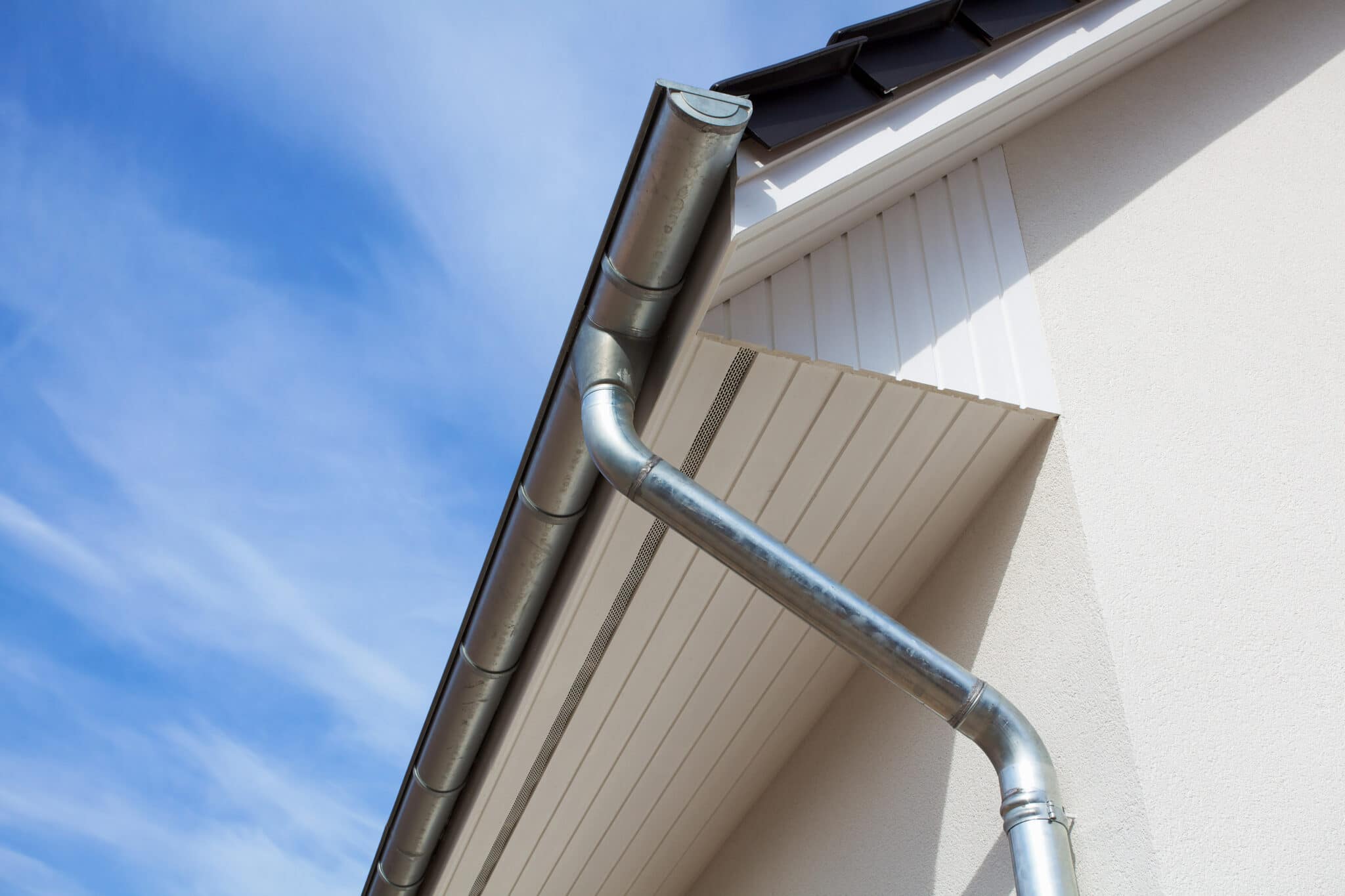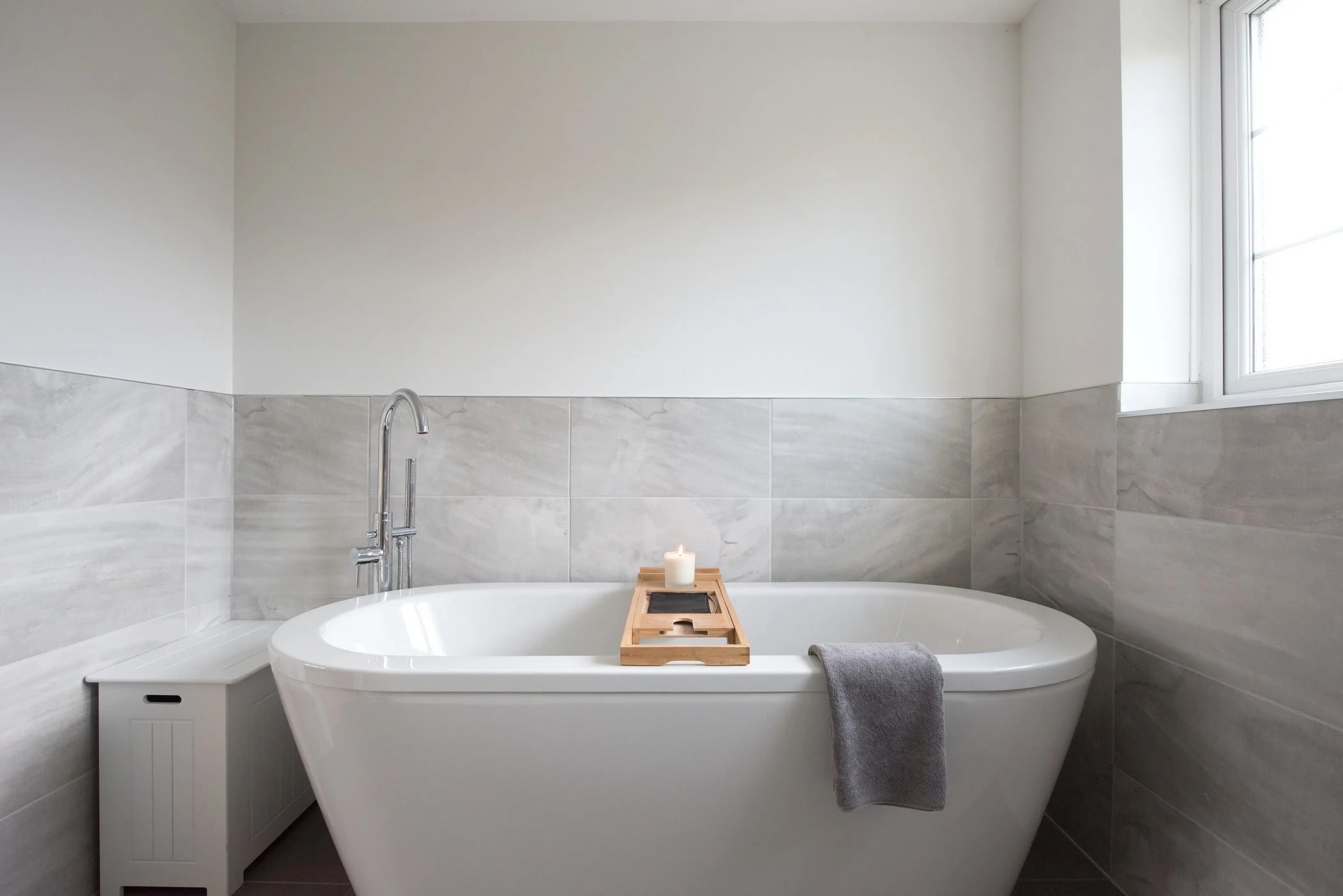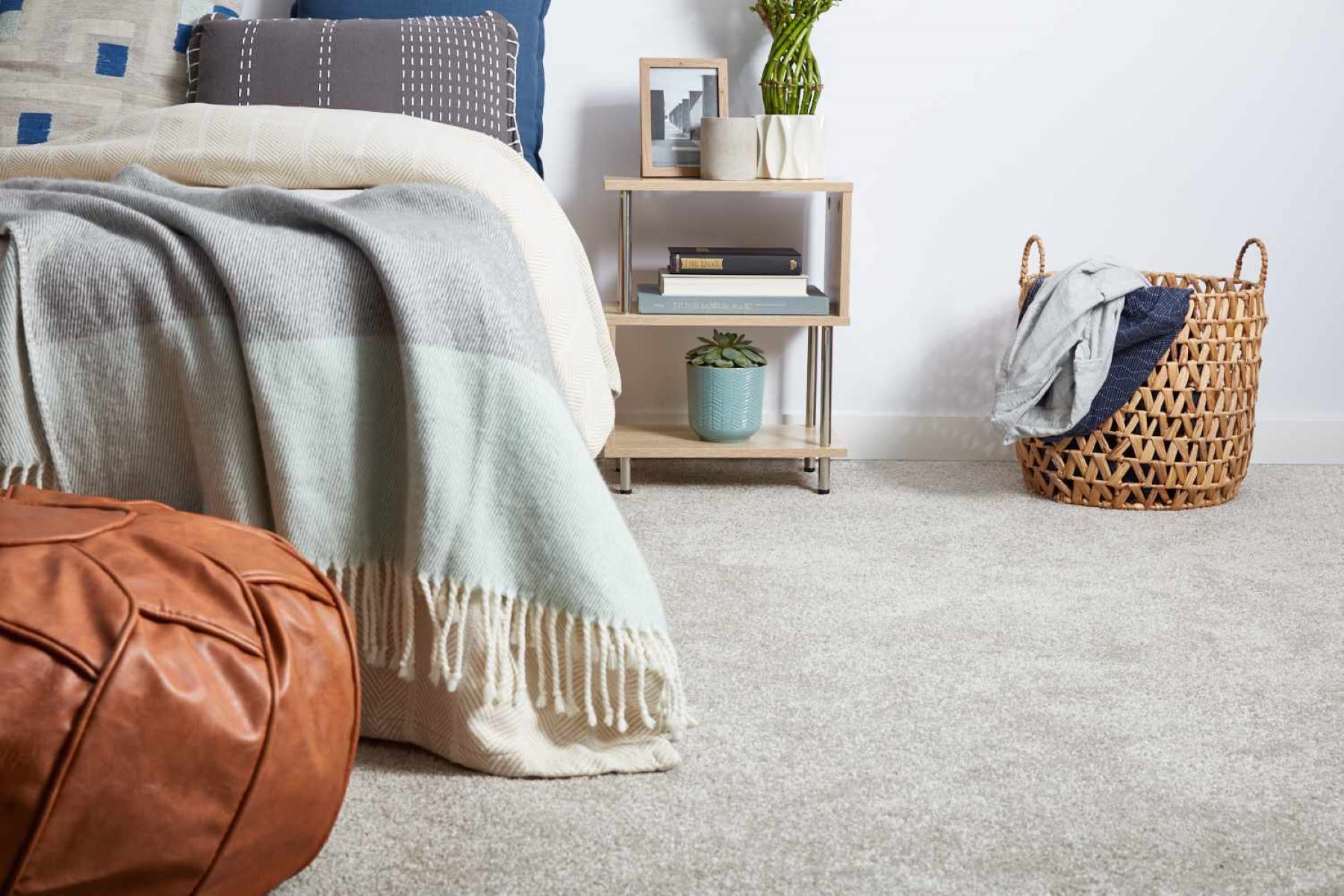Home>Furniture>Bedroom Furniture>What Type Of Mattress Is Best For Kids
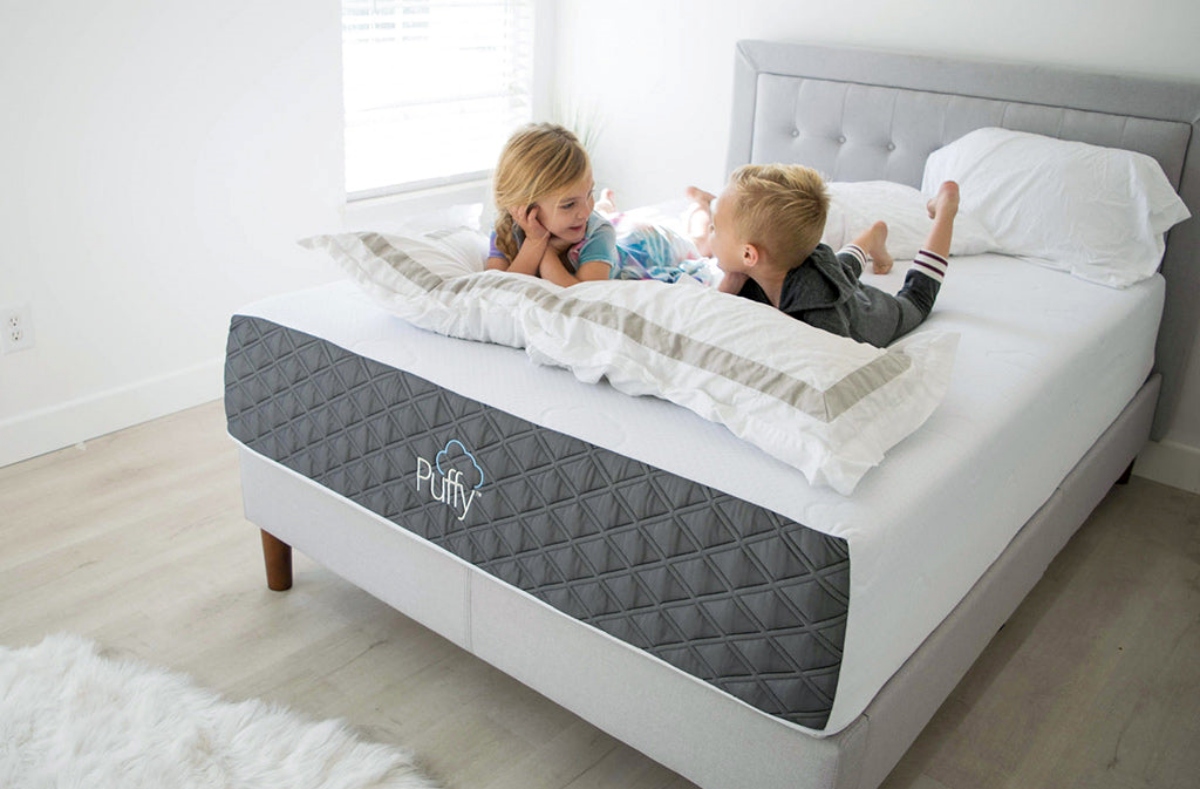

Bedroom Furniture
What Type Of Mattress Is Best For Kids
Modified: January 9, 2024
Discover the perfect bedroom furniture for your kids with our guide. Learn which type of mattress is best for their comfort and support.
(Many of the links in this article redirect to a specific reviewed product. Your purchase of these products through affiliate links helps to generate commission for Storables.com, at no extra cost. Learn more)
Introduction
When it comes to creating a comfortable and cozy bedroom for kids, choosing the right mattress is essential. A good mattress not only supports proper spinal alignment and promotes healthy sleep, but it also contributes to your child’s overall well-being and development. With so many options available in the market, it can be overwhelming to determine which type of mattress is best for your little ones.
In this article, we will explore the importance of choosing the right mattress for kids and provide valuable insights on factors to consider when selecting one. We will delve into different types of mattresses suitable for children, including innerspring, memory foam, latex, hybrid, and air mattresses. Additionally, we will discuss the benefits of waterproof and hypoallergenic mattresses, as well as safety considerations that are crucial for kids’ mattresses.
By the end of this article, you will have a comprehensive understanding of the various options available to you, empowering you to make an informed decision that will contribute to your child’s quality of sleep and overall comfort in their bedroom.
Key Takeaways:
- Choosing the right mattress for kids is crucial for their growth and well-being. Factors such as comfort, support, durability, and safety should be carefully considered to ensure a good night’s sleep and overall development.
- Different types of mattresses, including innerspring, memory foam, latex, hybrid, and air mattresses, offer unique benefits for children. Waterproof and hypoallergenic features, as well as safety considerations, are essential for creating a healthy sleep environment for kids.
Read more: What Is The Best Type Of A Mattress
Importance of Choosing the Right Mattress for Kids
Choosing the right mattress for your kids is of utmost importance for a variety of reasons. Sleep plays a vital role in their growth, development, and overall well-being. Here are some key reasons why it is crucial to select the right mattress:
- Proper Support: A good mattress provides the necessary support for your child’s growing body. It ensures that their spine is aligned correctly, promoting healthy posture and development.
- Quality Sleep: Children require restful and uninterrupted sleep to repair and rejuvenate their bodies. A comfortable mattress ensures that they can fall asleep quickly and stay asleep throughout the night, providing the necessary rest they need.
- Prevent Discomfort: The wrong mattress can lead to discomfort and restless nights for your child. It may cause them to toss and turn, leading to poor sleep quality and potential musculoskeletal issues in the long run.
- Allergen Protection: Kids are more prone to allergies, making it essential to choose a mattress that is hypoallergenic and resistant to dust mites, mold, and other common allergens. This helps create a healthier sleeping environment and reduces the risk of allergy flare-ups.
- Durability: Children are typically active and may jump on their beds or engage in rough play. Opting for a durable mattress ensures that it can withstand their activities and last for years, saving you the hassle and expense of replacing it frequently.
By selecting the right mattress for your kids, you are investing in their comfort, health, and overall sleep quality. It sets the foundation for good sleep habits from an early age, promoting physical and mental well-being.
Now that we understand the importance of choosing the right mattress for kids, let’s explore the key factors that should be considered when selecting one.
Factors to Consider When Selecting a Mattress for Kids
When it comes to choosing a mattress for your kids, there are several factors to consider to ensure you make the right decision. Here are some key considerations:
- Comfort: The comfort of the mattress is paramount. Look for a mattress that provides a balance of firmness and cushioning. It should be comfortable enough to promote deep and restful sleep without compromising on support.
- Safety: Safety is crucial when selecting a mattress for your children. Opt for mattresses that are certified to meet safety standards, such as those that are free from harmful chemicals and meet fire safety regulations.
- Size: Consider the size of the mattress based on your child’s age, height, and available space in the bedroom. It’s advisable to choose a mattress that allows for growth and provides ample room for comfortable sleep.
- Material: Different materials offer different benefits. Innerspring mattresses provide excellent support, memory foam mattresses conform to the body, latex mattresses offer natural hypoallergenic properties, hybrid mattresses combine different materials for optimal comfort, and air mattresses allow for adjustable firmness.
- Durability: Kids can be lively and rough on their mattresses. Opt for a mattress that is durable and can withstand the activities of children. Look for high-quality materials and construction that can withstand daily wear and tear.
- Temperature Regulation: Kids tend to get hot or sweaty during sleep. Look for mattresses that offer breathability and temperature regulation features, such as gel-infused memory foam or open-cell foam, to ensure a cool and comfortable sleep environment.
- Warranty and Return Policy: Check the warranty and return policy offered by the mattress manufacturer or retailer. This provides peace of mind in case you need to exchange or return the mattress if it does not meet your expectations.
By considering these factors, you can narrow down your options and select a mattress that not only meets your child’s comfort needs but also provides a safe and supportive sleeping surface. In the following sections, we will explore different types of mattresses suitable for kids, helping you make an informed choice.
Types of Mattresses Suitable for Kids
When it comes to selecting a mattress for your kids, there are various types to choose from. Each type offers different features and benefits. Here are the most common types of mattresses suitable for children:
- Innerspring Mattresses: Innerspring mattresses are constructed with a steel coil support system. They provide excellent support and durability. These mattresses are ideal for active children as they offer bounce and responsiveness, making them suitable for both young kids and teenagers.
- Memory Foam Mattresses: Memory foam mattresses are known for their contouring and pressure-relieving properties. They mold to the shape of your child’s body, providing personalized support and reducing the likelihood of pressure points. These mattresses are especially beneficial for children with growing bodies.
- Latex Mattresses: Latex mattresses are made from natural latex or synthetic latex foam. They offer excellent support and comfort. Latex mattresses are highly durable, hypoallergenic, and resistant to dust mites and mold, making them an ideal choice for children with allergies.
- Hybrid Mattresses: Hybrid mattresses combine the benefits of different materials, such as innerspring coils and memory foam or latex layers. These mattresses provide a balance of support, comfort, and responsiveness. Hybrid mattresses are suitable for kids who have specific comfort preferences or those who need additional spinal support.
- Air Mattresses: Air mattresses allow you to adjust the firmness level to suit your child’s comfort needs. These mattresses have air chambers that can be inflated or deflated to achieve the desired level of support. They are a versatile option, suitable for kids of different ages and preferences.
Each type of mattress has its unique features, so consider your child’s specific needs and preferences when making a selection. The next sections will delve into the benefits and considerations of each type in more detail.
Now that we have explored the different types of mattresses suitable for kids, let’s take a closer look at innerspring mattresses.
Innerspring Mattresses for Kids
Innerspring mattresses are a popular choice for kids due to their durability, support, and affordability. These mattresses are constructed with a system of steel coils that provide support and stability. Here are some key benefits and considerations of innerspring mattresses for kids:
Benefits:
- Excellent Support: Innerspring mattresses offer firm support, which is essential for growing children. The coil system provides proper spinal alignment, promoting healthy posture and development.
- Bounce and Responsiveness: Innerspring mattresses have a natural bounce and responsiveness, making them ideal for active kids who may enjoy bouncing or jumping on their beds.
- Durability: Innerspring mattresses are known for their durability and longevity. They can withstand the activities of kids, such as jumping or rough play, without losing support or comfort.
- Affordability: Compared to other types of mattresses, innerspring mattresses tend to be more affordable, making them a budget-friendly option for families.
Considerations:
- Motion Transfer: Innerspring mattresses may have more motion transfer compared to other types of mattresses. If your child tends to move around a lot during sleep, this may result in slight disturbances for a bed partner.
- Comfort: While innerspring mattresses offer support, some may find them less comfortable compared to memory foam or latex mattresses, which contour to the body. Consider adding a mattress topper for additional cushioning if needed.
When selecting an innerspring mattress for your child, consider the coil count, as mattresses with more coils tend to offer better support. Additionally, check the quality of the materials and the warranty provided by the manufacturer to ensure a long-lasting investment.
Now that we have explored innerspring mattresses for kids, let’s move on to discuss the benefits of memory foam mattresses.
Read more: What Type Of Mattress Is Best For Sciatica
Memory Foam Mattresses for Kids
Memory foam mattresses have gained popularity over the years due to their unique ability to contour to the body and provide superior comfort. These mattresses are made from viscoelastic foam, which reacts to body heat and pressure, allowing it to mold and adapt to your child’s shape. Here are some key benefits and considerations of memory foam mattresses for kids:
Benefits:
- Pressure Relief: Memory foam mattresses offer excellent pressure relief by distributing weight evenly and reducing the likelihood of pressure points. This is especially beneficial for children who may spend long hours in bed while studying or engaging in other sedentary activities.
- Body Contouring: Memory foam molds to the body, providing personalized support and aligning the spine. This helps promote proper posture and spinal alignment, which is important for growing children.
- Reduced Motion Transfer: Memory foam mattresses absorb motion, reducing disturbances caused by movements during sleep. This makes them an excellent choice for kids who share a bed or have a restless sleeping pattern.
- Hypoallergenic Properties: High-quality memory foam mattresses are naturally hypoallergenic, resistant to dust mites, and mold-resistant. This makes them a suitable choice for children with allergies or asthma.
Considerations:
- Heat Retention: Traditional memory foam mattresses have been known to retain body heat, potentially causing discomfort for some individuals. Look for memory foam mattresses with cooling properties, such as gel-infused foam or open-cell foam, to mitigate heat retention.
- Initial Odor: Some memory foam mattresses may have an initial odor due to the manufacturing process. This odor is non-toxic and dissipates over time, especially with proper ventilation.
When choosing a memory foam mattress for your child, consider the density of the foam. Higher density foam provides better support and durability. Additionally, check for certifications such as CertiPUR-US® to ensure the mattress is free from harmful chemicals.
Now that we have explored memory foam mattresses for kids, let’s move on to discuss the benefits of latex mattresses.
Latex Mattresses for Kids
Latex mattresses have gained popularity in recent years due to their natural and hypoallergenic properties. These mattresses are made from latex foam, which is derived from the sap of rubber trees. Latex mattresses offer unique benefits that make them suitable for kids. Here are some key benefits and considerations of latex mattresses for children:
Benefits:
- Hypoallergenic: Latex mattresses are naturally resistant to allergens such as dust mites, mold, and mildew. This makes them an excellent choice for kids with allergies or asthma, as it helps ensure a hypoallergenic sleeping environment.
- Durability: Latex mattresses are known for their durability and long lifespan. They can withstand the activities of children without losing their shape or support.
- Excellent Support and Comfort: Latex foam provides exceptional comfort and support. It conforms to the body’s contours while offering responsive support, promoting proper spinal alignment in growing children.
- Breathability: Latex mattresses have an open-cell structure that allows for better airflow and breathability. This helps regulate temperature and prevents overheating, ensuring a comfortable sleep environment.
Considerations:
- Price: Latex mattresses tend to be more expensive compared to other types of mattresses. However, their durability and hypoallergenic properties make them a worthwhile investment in your child’s sleep health.
- Weight: Latex mattresses can be heavy, making it slightly more challenging to move or rotate them. Consider this factor when deciding the logistics of placing the mattress in your child’s bedroom.
When choosing a latex mattress for your child, look for mattresses made from natural latex that is certified by reputable organizations such as GOLS (Global Organic Latex Standard) or GOTS (Global Organic Textile Standard). These certifications ensure the latex is free from harmful chemicals and meets strict environmental and social criteria.
Now that we have explored latex mattresses for kids, let’s move on to discuss the benefits of hybrid mattresses.
When choosing a mattress for kids, look for one that provides good support for growing bodies. Consider a medium-firm mattress to support proper spinal alignment and avoid sagging. Additionally, look for hypoallergenic materials to minimize potential allergens.
Hybrid Mattresses for Kids
Hybrid mattresses combine the best of both worlds by incorporating elements of innerspring and foam mattresses. These mattresses typically consist of a coil support system combined with layers of foam or latex. Hybrid mattresses offer a balance of support, comfort, and responsiveness, making them suitable for kids. Here are some key benefits and considerations of hybrid mattresses for children:
Benefits:
- Supportive and Responsive: The coil support system in hybrid mattresses offers excellent support for growing children. The layers of foam or latex provide added contouring and responsiveness, ensuring optimal comfort.
- Breathability: Hybrid mattresses tend to have better airflow and breathability compared to all-foam mattresses. This helps regulate temperature and prevent overheating, creating a comfortable sleep environment for your child.
- Pressure Relief: The combination of coil support and foam or latex layers in hybrid mattresses helps distribute body weight evenly, reducing the likelihood of pressure points and promoting better spinal alignment.
- Durability: Hybrid mattresses are typically constructed with high-quality materials, making them durable and long-lasting. They can withstand the activities of children without losing support or comfort.
Considerations:
- Price: Hybrid mattresses tend to be more expensive compared to traditional innerspring or foam mattresses. However, the benefits they offer make them a worthwhile investment for your child’s sleep comfort and overall health.
- Weight: Hybrid mattresses can be heavier than other types of mattresses due to their construction. Consider this factor when setting up or moving the mattress in your child’s bedroom.
When selecting a hybrid mattress for your child, pay attention to the quality of the materials, such as the coil gauge and foam or latex density. Higher-quality materials contribute to better durability and comfort. Additionally, consider the firmness level that suits your child’s preferences and sleeping habits.
Now that we have explored hybrid mattresses for kids, let’s move on to discuss the benefits of air mattresses.
Air Mattresses for Kids
Air mattresses provide a unique and adjustable sleeping surface for kids. These mattresses are constructed with inflatable chambers that can be filled with air to achieve the desired level of firmness. Air mattresses offer versatility and customization options that make them suitable for children. Here are some key benefits and considerations of air mattresses for kids:
Benefits:
- Adjustable Firmness: One of the primary benefits of air mattresses is the ability to adjust the firmness level according to your child’s preference. This customizable feature allows you to cater to individual comfort needs.
- Portability: Air mattresses are lightweight and easy to deflate, making them portable and convenient for activities such as camping trips or sleepovers at friends’ houses.
- Suitability for Different Ages: Air mattresses can be suitable for children of various ages. By adjusting the firmness level, you can adapt the mattress to the specific needs and comfort preferences of your child as they grow.
- Affordability: Air mattresses tend to be more affordable compared to other types of mattresses. This makes them an attractive option for families on a budget or those who require a temporary bedding solution.
Considerations:
- Longevity: Air mattresses may not have the same durability as traditional mattresses. While they can be a practical short-term solution, consider their longevity and the potential need for replacement in the future.
- Leakage Risks: Due to their inflatable nature, there is a possibility of air leakage over time. Ensure that the mattress has reliable mechanisms, such as reinforced seams and a quality air valve, to minimize the risk of leaks.
When selecting an air mattress for your child, consider the quality of the materials, ease of inflation and deflation, and the presence of additional features such as built-in pumps or adjustable pressure settings. Regularly check the mattress for any signs of air leakage and maintain proper care and storage to extend its lifespan.
Now that we have explored air mattresses for kids, let’s move on to discuss the benefits of waterproof and hypoallergenic mattresses.
Waterproof and Hypoallergenic Mattresses for Kids
When it comes to selecting a mattress for kids, considering features such as waterproofing and hypoallergenic properties can offer added benefits for their comfort and health. Here are the key advantages of choosing waterproof and hypoallergenic mattresses:
Waterproof Features:
- Stain Protection: Kids are prone to accidental spills and bedwetting. Waterproof mattresses offer protection against stains, preventing liquids from seeping into the mattress and causing damage or odors.
- Easier Cleaning: Cleaning a waterproof mattress is much easier compared to traditional mattresses. Simply wipe off any spills or accidents with a damp cloth and mild soap, keeping the mattress fresh and hygienic.
- Extended Mattress Lifespan: The waterproof barrier helps to prevent moisture buildup and the growth of bacteria and mold, ultimately prolonging the lifespan of the mattress.
Hypoallergenic Properties:
- Allergy Prevention: Hypoallergenic mattresses are designed to resist common allergens such as dust mites, mold, and pet dander. This helps create a healthier sleeping environment for children with allergies or asthma.
- Better Air Quality: By reducing the presence of allergens, hypoallergenic mattresses contribute to improved indoor air quality, which is essential for overall respiratory health and better sleep.
- Safe for Sensitive Skin: Hypoallergenic mattresses are made from materials that are gentle and less likely to cause skin irritation or allergic reactions, making them suitable for kids with sensitive skin.
When selecting a waterproof and hypoallergenic mattress for your child, consider the material used for the waterproofing layer, ensuring it is durable, breathable, and free from harmful chemicals. Look for mattresses that have been tested and certified for their hypoallergenic properties, such as those marked with hypoallergenic certifications or labels.
Now that we have explored the benefits of waterproof and hypoallergenic mattresses, let’s move on to discuss the importance of choosing the right mattress size for kids.
Choosing the Right Mattress Size for Kids
Choosing the right mattress size for kids is essential to ensure their comfort and accommodate their growth. Here are some factors to consider when selecting the appropriate mattress size:
- Age and Growth: Consider your child’s age and anticipated growth. While a smaller mattress may be suitable for a toddler, it may quickly become cramped as they grow. Opting for a larger size allows for more space and ensures the mattress can accommodate your child’s changing needs over time.
- Sleeping Habits: Take into account your child’s sleeping habits. If they tend to move around a lot during sleep or share a bed with a sibling, a larger mattress size provides more room to comfortably accommodate their movements.
- Available Bedroom Space: Measure the dimensions of your child’s bedroom to determine the maximum mattress size that can fit comfortably. It’s important to ensure that the mattress does not overcrowd the room and allows for easy movement and furniture placement.
- Future Use: Consider the long-term use of the mattress. If you anticipate that your child will continue to use the same mattress through their teenage years, it may be worthwhile to select a larger size that can accommodate their growth and provide ample space for years to come.
Common mattress sizes for kids include twin, twin XL, and full (also known as double). Twin mattresses are typically suitable for younger children or those with limited space. Twin XL mattresses offer extra length and are suitable for taller kids or teenagers. Full-size mattresses provide more width and are a great option for growing kids or those who prefer more sleeping space.
Ultimately, selecting the most appropriate mattress size for your child depends on their individual needs, available space, and consideration for future growth. Taking these factors into account will ensure a comfortable and functional sleep environment for your child.
Now that we have discussed choosing the right mattress size for kids, let’s move on to the importance of safety considerations for kids’ mattresses.
Safety Considerations for Kids’ Mattresses
When selecting a mattress for your child, it is crucial to prioritize safety to ensure a secure and healthy sleep environment. Here are some essential safety considerations for kids’ mattresses:
- Certifications: Look for mattresses that are certified to meet safety standards, such as those approved by organizations like CertiPUR-US® or Oeko-Tex®. These certifications ensure that the mattress materials are free from harmful chemicals that can pose health risks to children.
- Flame Resistance: Ensure that the mattress meets fire safety standards. Look for mattresses that are manufactured using non-toxic flame retardant materials or those that meet federal flammability regulations, such as 16 CFR Part 1633 or 1632.
- Edge Support: Consider mattresses with reinforced edge support. This helps prevent sagging or sinking at the edges, reducing the risk of falls or entrapment while your child is sleeping or playing on the mattress.
- Cover Material: Opt for mattresses with removable, washable, and breathable covers. This allows for easy cleaning and maintenance, reducing the accumulation of allergens and ensuring a hygienic sleep surface for your child.
- Supportive Foundation: Ensure that the mattress is placed on a sturdy and supportive foundation. This helps maintain the integrity of the mattress and ensures safe and comfortable sleep for your child.
- Age-Appropriate Features: Consider the age and developmental stage of your child. For younger children, avoid mattresses with excessive cushioning or pillow tops that can increase the risk of suffocation. Instead, opt for firmer mattresses that provide ample support.
By prioritizing safety considerations, you can provide your child with a secure and comfortable sleeping environment. Regularly inspect and maintain the mattress, checking for any signs of wear or damage, and follow the manufacturer’s guidelines for maintenance and usage.
With proper safety precautions in place, you can have peace of mind knowing that your child’s mattress meets the necessary standards for their well-being.
Now that we have discussed safety considerations for kids’ mattresses, let’s summarize the key points covered in this article.
Conclusion
Choosing the right mattress for your kids is a crucial decision that can greatly impact their comfort, sleep quality, and overall well-being. By considering factors such as comfort, support, durability, and safety, you can make an informed choice that meets the specific needs of your child.
We have explored various types of mattresses suitable for kids, including innerspring, memory foam, latex, hybrid, and air mattresses. Each type offers unique benefits, such as excellent support, pressure relief, durability, and customization options.
Additionally, we discussed the advantages of waterproof and hypoallergenic mattresses, which provide added protection against stains, allergens, and moisture. These features contribute to a healthier and more hygienic sleeping environment for your child.
Furthermore, we emphasized the importance of choosing the right mattress size for kids, taking into account age, growth, sleeping habits, and available bedroom space. Selecting an appropriate mattress size ensures comfort and adaptability as your child grows.
Safety considerations are paramount when choosing a mattress for kids. Certifications, flame resistance, edge support, cover material, and supportive foundations are all important factors to ensure the safety and well-being of your child during sleep.
In conclusion, by carefully considering comfort, support, durability, safety, and size, you can select the perfect mattress for your child. A good mattress not only promotes healthy sleep but also contributes to their overall growth and development. Prioritizing their comfort and well-being will lead to restful nights and happy, refreshed mornings for your child.
We hope this comprehensive guide has provided valuable insights to help you make an informed decision when choosing a mattress for your kids. Sleep tight!
Frequently Asked Questions about What Type Of Mattress Is Best For Kids
Was this page helpful?
At Storables.com, we guarantee accurate and reliable information. Our content, validated by Expert Board Contributors, is crafted following stringent Editorial Policies. We're committed to providing you with well-researched, expert-backed insights for all your informational needs.
